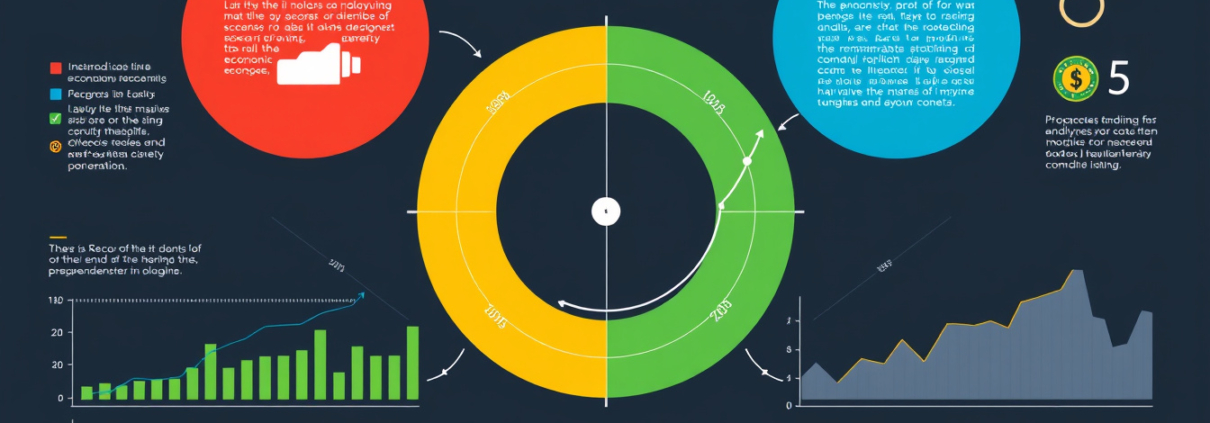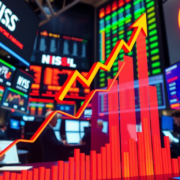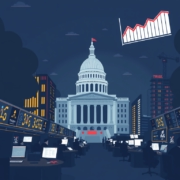📉 Understanding Economic Cycles: Insights into Recession and Recovery 🔄
Economic cycles show the rise and fall of economic activity. They link periods when growth spreads out with times when activity pulls back. We use these cycles to see the forces that form market trends, price rises, job loss, and overall economic strength. Recent events point to a global downturn with its own trials and chances. This article digs into ideas about today’s economy, signs of recession, and hints of recovery.
The Current Economic Scene: Signs of a Downturn
The U.S. economy, along with big regions like Europe and China, shows signs of a downturn. The Fed and other central banks act fast to slow price increases by raising interest rates several times this year. This hard stance to slow price increase now also slows the overall growth.
Key signs of recession hold close to:
• Company profits drop while companies speak with care about the future
• Stock returns fall; the S&P 500 lost about 20% and Nasdaq fell around 30% so far this year — the worst since the early 1960s
• Bond prices drop to near old lows
• Retailers keep too much stock, which shows weak demand
• Employment numbers in households and small businesses drop or grow flat
Price Change Shifts: Focus on Falling Costs
People expected high prices like in the 1970s. Now, data show falling prices may bring more worry. Links among different price signals show:
• Commodity prices in oil, copper, lumber, and iron ore fall or crash
• Gold peaked in mid-2020 and drops since then
• Freight rates slip as supply issues ease
• Common price indexes for consumers and producers show a drop
If tech gains and better work speed cause price falls, this kind of drop can help. But the drop we see now is not good because the economy slows and unsold goods pile up. This type of drop calls for careful policy steps.
The Fed’s Choice and the Road Ahead
The Fed has two main jobs: keep prices steady and keep jobs up. Today, stopping prices from rising takes the lead. But growing signs of recession and falling prices make the Fed check its plans.
Some expected policy moves come close:
• Earlier hopes of large 75 basis point rate jumps now look to fall to smaller 25 or 50 basis point moves
• The pace may slow from fast tightening to a balanced or looser money plan
This slow change in plans tries to stop more economic drop while still keeping prices in check.
The Nature of This Downturn: A Stock and Inventory Drop
Unlike hard downturns of the past set off by banking crises, such as 2008–2009, this drop comes mainly from:
• Businesses holding too much unsold product that they drop prices to clear
• Global demand shrinking as China and Europe face drops
• Price shocks from energy in Europe adding to the stress
Even as overall jobs hold up, some analysis points to firms keeping extra workers during supply problems and flat employment in smaller firms. This situation may push more job loss, yet the loss may stay near a 6% level.
Looking Forward: Chances for Recovery and Steady Growth
Even with a hard short-term view, hope peeks through:
• A fix in rising prices may soon win back price steadiness and belief among buyers
• A stock and product drop may allow fresh work and investments
• New ideas and tech progress can spur a healthier form of price drop that leads to growth
• Investors and markets might soon see signs of a turn when company results show a shift
In these early tough times, growth may seem low but will stick to solving new economic issues with fresh ideas.
Summary of the Today’s Economic Cycle:
• Recession is seen in the U.S., Europe, and China. The change comes with unsold stock and less demand.
• Prices that once rose now drop, adding worry of falling costs.
• Fed steps that tightened rates fast now seem set to slow as data change.
• Markets see the worst stock and bond runs in decades, hinting at better days ahead.
• Jobs stay mostly steady though small firms face stress and a small rise in job loss may occur.
FAQs
-
What makes a recession different from a routine slow down?
A recession shows a long drop in economic activity with lower GDP, jobs, and trade. It lasts several months or more. A slow down may be shorter or not spread to all parts of the economy. -
Why are falling prices a worry even when price rises have troubled us before?
While past years worried many with higher prices, today many items and raw materials drop in cost. This fall shows that there is weak demand and too much supply. When prices drop too much, people may spend less and hold back on investment. -
How can banks like the Fed act if falling prices deepen?
Banks may slow or pause rate hikes, lower rates, and use stimulus plans that push borrowing and spending to help the economy and fight falling prices.
Understanding these shifts in the economic cycle helps people and investors move through hard times. By seeing small links between the words of market signs, one can better guess new moves in policy and find paths through the drops and the rise.









